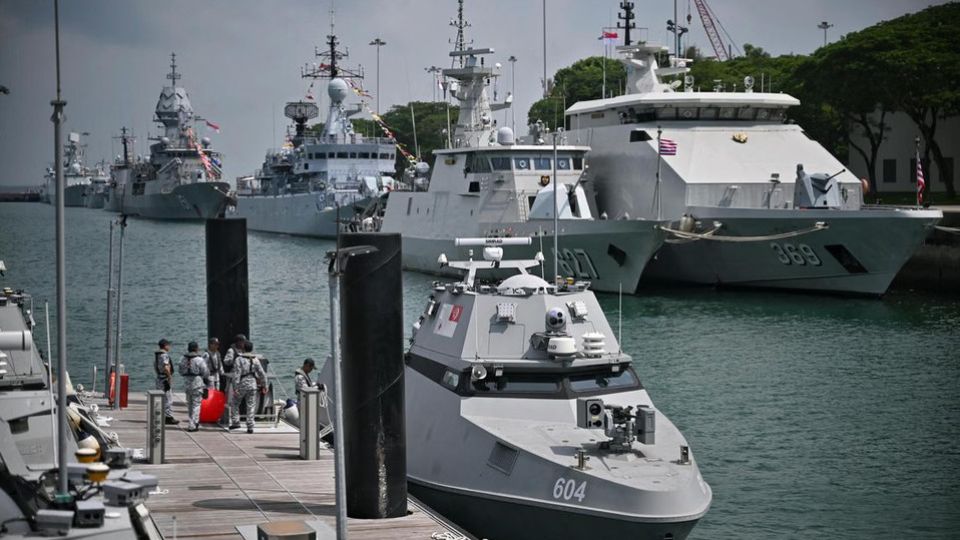May 8, 2025
SINGAPORE – The Republic of Singapore Navy (RSN) will begin operating a new fleet of unmanned systems from 2027 to detect and neutralise underwater mines, the latest in moves to modernise the Republic’s naval capabilities and protect its vital sea lines.
The new systems will be supplied by local technology and engineering firm ST Engineering, which announced on May 7 that it had been awarded Ministry of Defence (Mindef) contracts to deliver the suite of mine countermeasure (MCM) unmanned systems.
The new capabilities include MCM unmanned surface vessels (USVs), autonomous underwater vehicles (AUVs), and command and control (C2) infrastructure.
Designed to operate in tandem, these systems will replace the navy’s Bedok-class MCM vessels, which will remain operational during the transition.
The unmanned systems are intended to enhance the RSN’s ability to identify and neutralise naval mines while keeping personnel at a safe distance, said ST Engineering.
They will be equipped with advanced sensors and secure communications networks to transmit real-time data to the C2 Centre, where operators can monitor and control missions remotely, either from shore or a mothership.
In a separate release on May 7, Mindef said the MCM USVs will carry key payloads such as towed synthetic aperture sonars to detect mines, as well as systems to neutralise mines and weapons that are controlled remotely.
The USVs will also feature autonomous navigation systems, which incorporate a locally developed collision detection and avoidance algorithm that allow the vessels to operate safely in the busy traffic of the Singapore Strait.
“Planned for progressive delivery from 2027 onwards, the acquisition of these capabilities will enhance the Republic of Singapore Navy’s ability to respond to evolving maritime security threats,” said Mindef.
ST Engineering added that it would also supply a highly realistic simulation system to allow navy personnel to train in a safe environment.
The system will help users hone their operational skills by practising decision-making and carrying out a range of MCM scenarios safely, it said.
The firm’s president of digital systems, Mr Low Jin Phang, said that the suite of MCM unmanned systems builds on its success in delivering the maritime security (Marsec) USVs for the navy.
The Marsec USVs have been patrolling Singapore’s waters since January 2025, complementing manned ships such as littoral mission vessels and providing the RSN with greater operational flexibility. Three Marsec USVs have been delivered, with a fourth scheduled to join the fleet later this year.
Mr Low said: “We aim to push the boundaries of USVs and AUVs for MCM operations with artificial intelligence, enabling real-time data analysis for faster, more informed decisions.”
Underwater mines have long been a challenge for maritime nations like Singapore, as they are inexpensive, relatively easy to deploy, and can disrupt both military and commercial traffic.
The dangers have evolved to include improvised explosive devices that can be easily deployed by terrorists.
Navies have increasingly turned to unmanned MCM systems to reduce the risk to personnel while improving the efficiency of mine-clearing operations.
They include the US Navy, which operates the Knifefish unmanned underwater vehicle that is designed to detect and classify naval mines in deep and shallow waters without endangering divers or crewed vessels.
Singapore’s four Bedok-class MCM vessels, all commissioned in 1995, received a midlife upgrade in 2014 to augment their mine detection and disposal capabilities.
In 2021, the RSN proved that USVs it was testing could successfully identify and neutralise an underwater threat remotely, with the validation reportedly a world-first capability.


